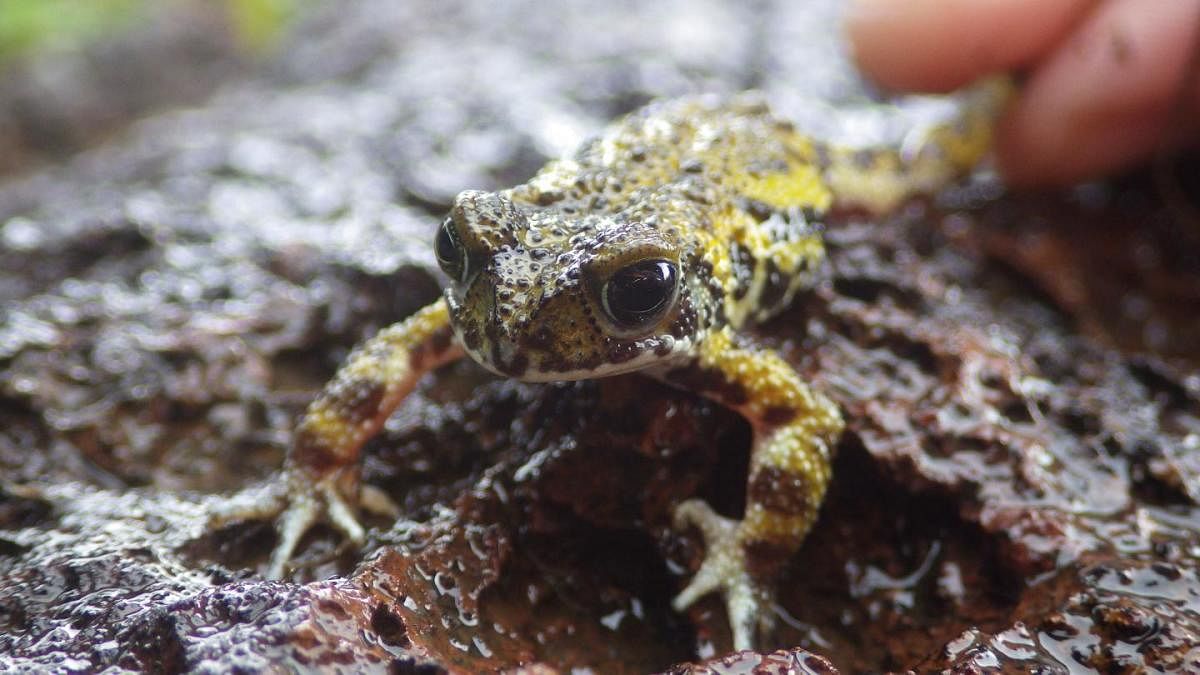
A killer pathogen has now been found among the critically endangered Amboli toads in the Western Ghats.
The killer is a fungus named Batrachochytrium dendrobatidis, which in the past eliminated several species in other parts of the world.
It can cause a lethal disease named chytridiomycosis, which is considered a significant threat wherever it is found.
Though the pathogen was detected in the Western Ghats in the past, researchers from the University of Plymouth spotted the pathogen in Amboli toads— a critically endangered frog species endemic to coastal Maharashtra— and white-lipped Cricket Frog, which also faces the threat of extinction.
Amboli toads are already under extinction pressure with their rocky habitation getting eroded due to population expansion, bauxite mining, wind turbine installation and tourism.
The pathogen pose yet another conservation challenge.
Scientists say there is currently no evidence to suggest the pathogen has developed into the fatal disease within the Western Ghats but the situation should be monitored closely.
“The pathogen causes chytridmycosis which can be lethal. The big question that no one has the answer to is what would trigger this widespread but low-intensity infection to become lethal. The triggers are unknown,” Chris Thorpe, one of the scientists associated with the study at the University of Plymouth told DH.
Widespread in many countries, the deadly chytrid fungus is blamed for most of the 200 recent amphibian-disappearances.
For this study, Plymouth scientists visited 13 sites in the northern part of the region, and tested 118 individuals from 21 species.
As many as 79 of the amphibians tested positive for the fungus.
Although it was not currently at a sufficient concentration to have developed into the killer disease, the worry is no one knows whether the infection will ever become lethal or when that will happen.
On a positive note, the researchers find the infection's intensity much lower in coastal region where temperatures are higher, which could provide a future refuge for the Amboli toads from high-intensity infection.
“One of the best methods of preserving amphibians to have multiple populations in different places so if one becomes extinct you will still have others. There is a greater risk to rare species only found in a single place such as the Amboli Toad,” said Thorpe.
The Western Ghats occupy just 5% of the Indian land mass and yet are home to about 42% of its amphibian species (161 species).
Many amphibian species found are rare, with 87% found only in the Western Ghats.
Published in the Royal Society Open Science journal, the study was carried out in collaboration with scientists at Imperial College, London; George Washington University, Washington and Tata Institute of Social Sciences, Osmanabad.
